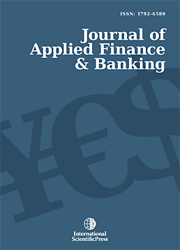Journal of Applied Finance & Banking
Does Deep Learning with Multilayer Perceptron Perform Well in Predicting Credit Risk?
-
 [ Download ]
[ Download ]
- Times downloaded: 203
Abstract
This paper investigates the effectiveness of using Deep Learning with Multilayer Perceptron (MLP) to assess credit risk in banks. To this end, its performance is compared with that of Support Vector Machine (SVM), Gradient Boosting, Decision Tree (Random Forest), and Logistic Regression algorithms using credit risk analysis data from customers of two of the largest Brazilian financial institutions, focusing exclusively on Direct Consumer Credit operations. Performance is measured using accuracy, precision, recall, F1-score, AUC-ROC, and cross-validation. The MLP model presented the best overall performance, with accuracies of 84.45% (Bank A) and 94.00% (Bank B) and higher recall values, while Gradient Boosting achieved the highest AUC-ROC scores (87.90% and 94.10%). All machine learning models outperformed Logistic Regression (79.0% and 78.38%), demonstrating that the adoption of these techniques — especially MLP — can significantly improve default prediction in direct consumer credit.
JEL Classification: C45, C52, G21, G32.
Keywords: Credit Risk Analysis, Machine Learning Models, Deep Learning, Multilayer Perceptron.
